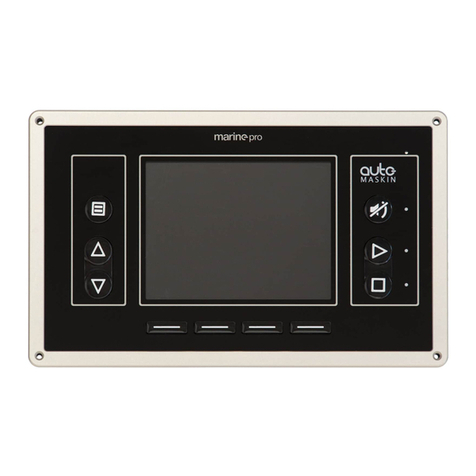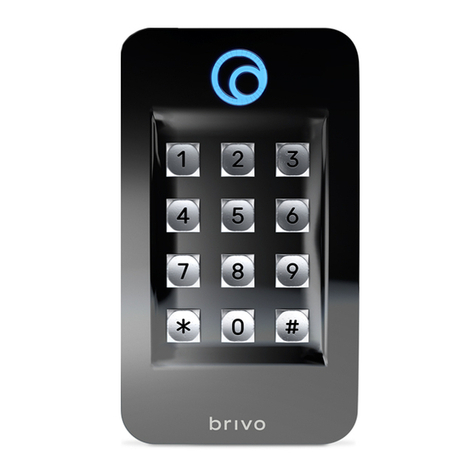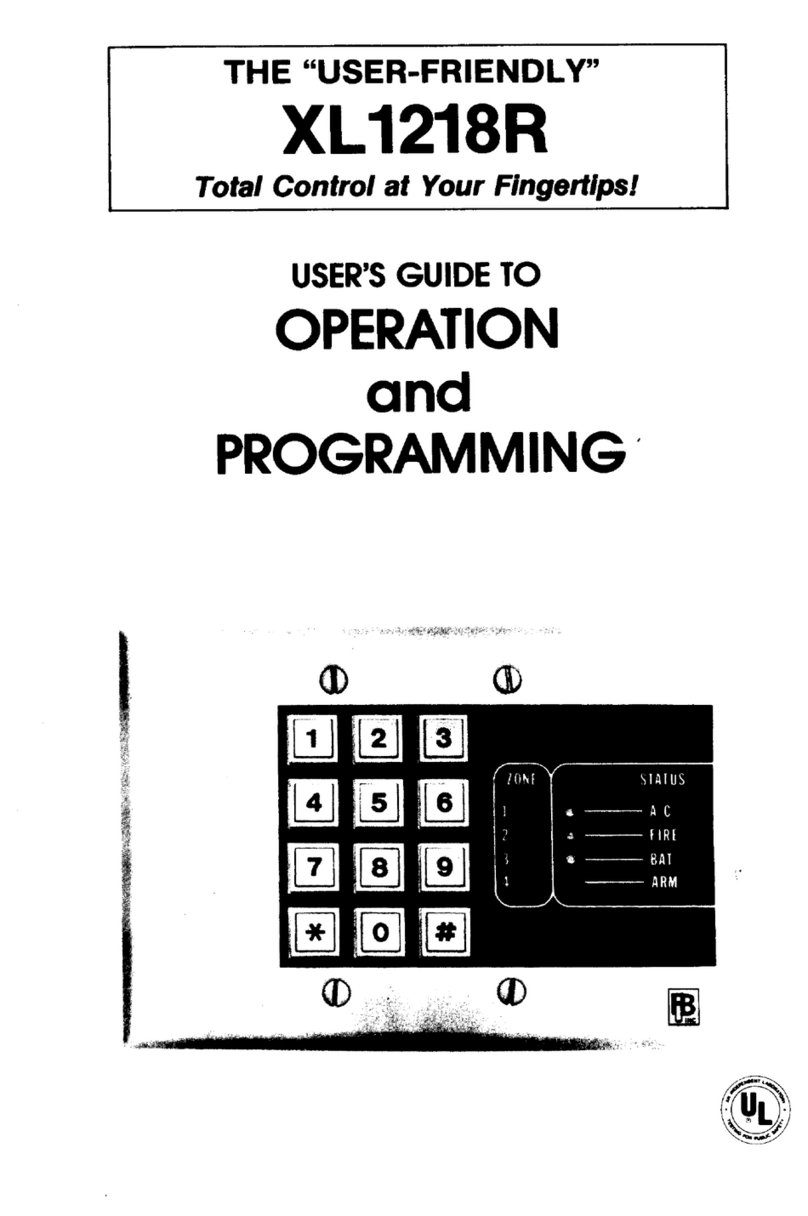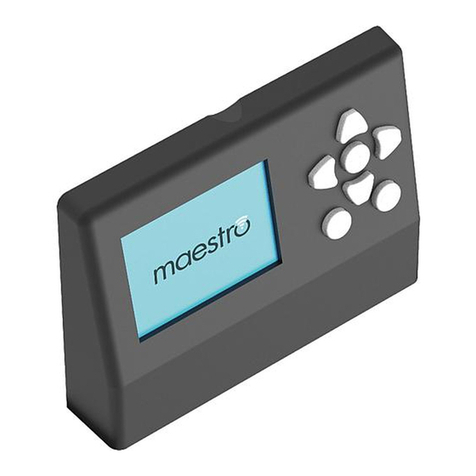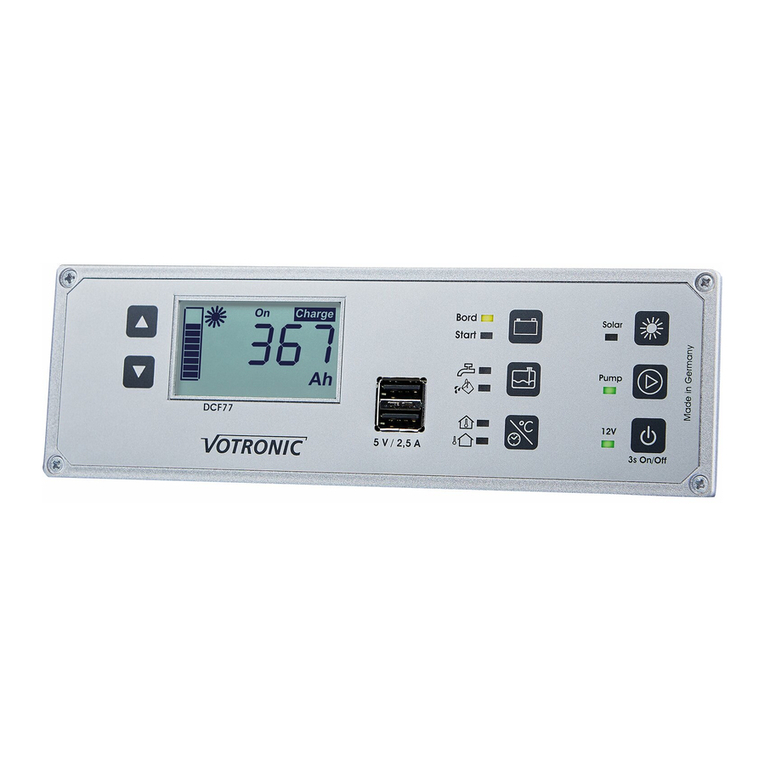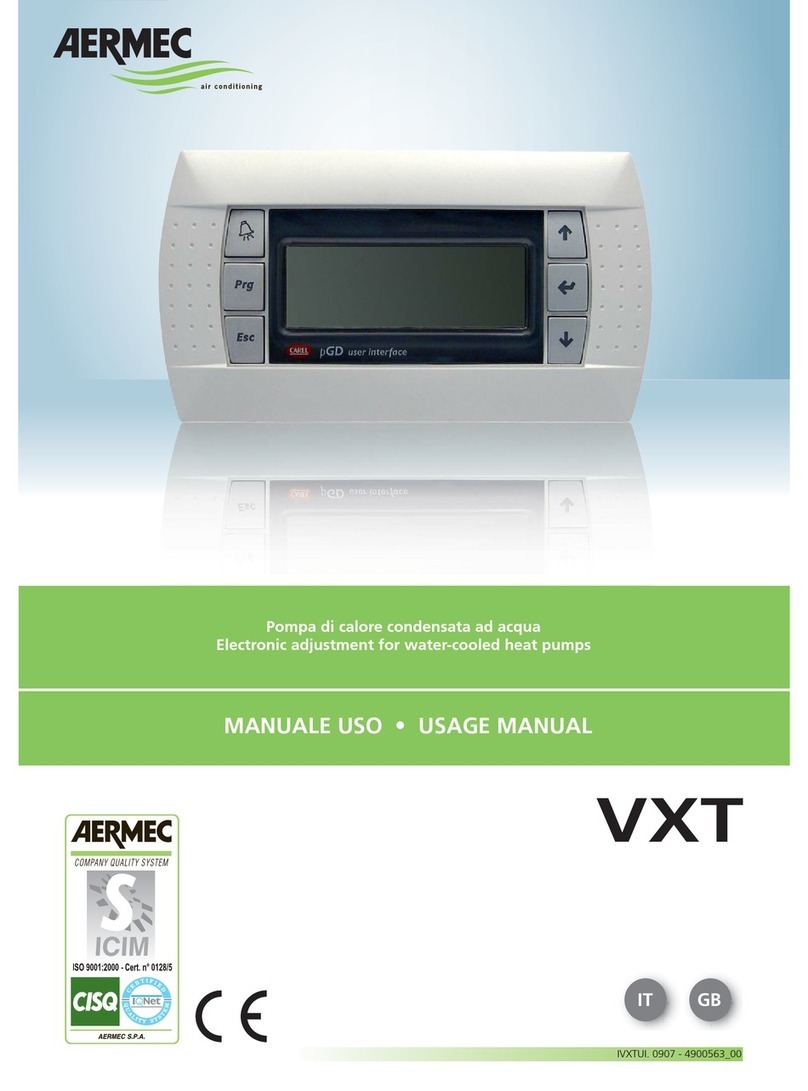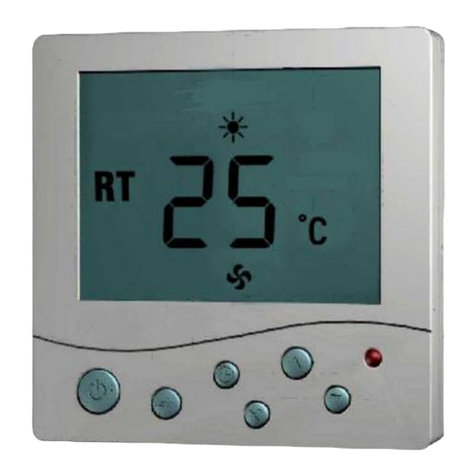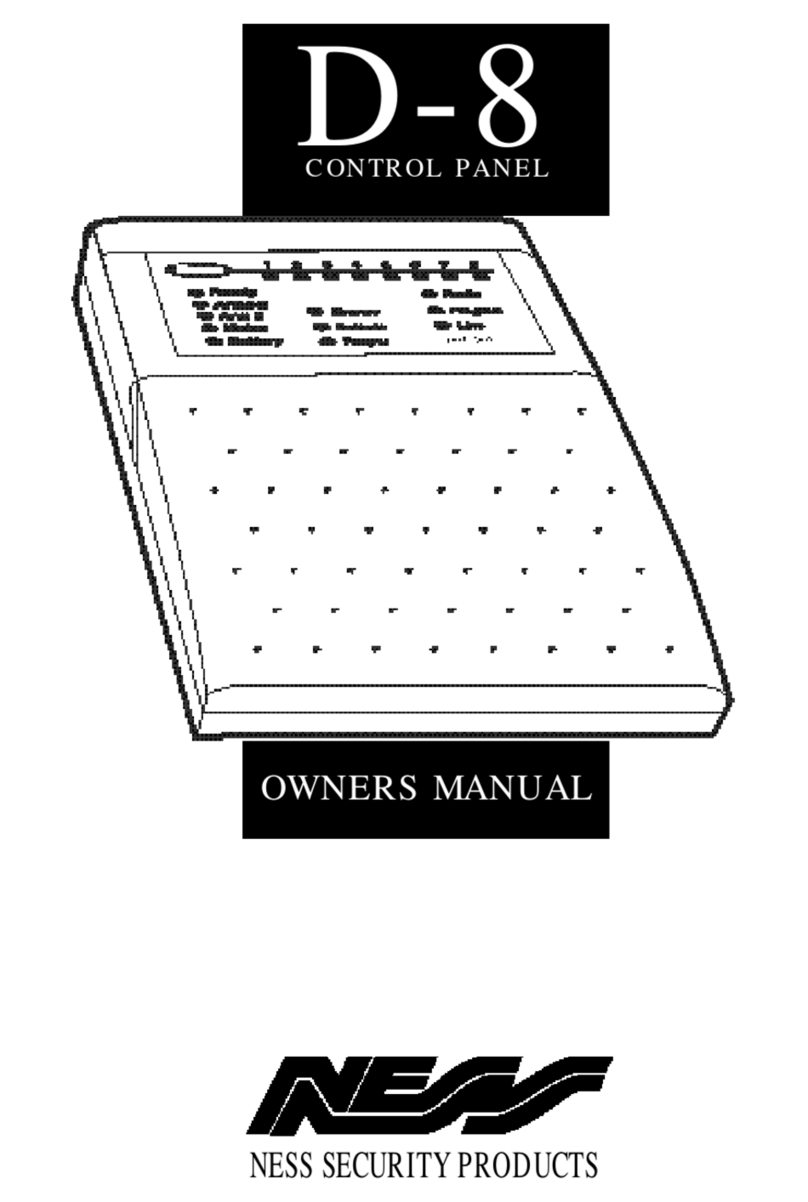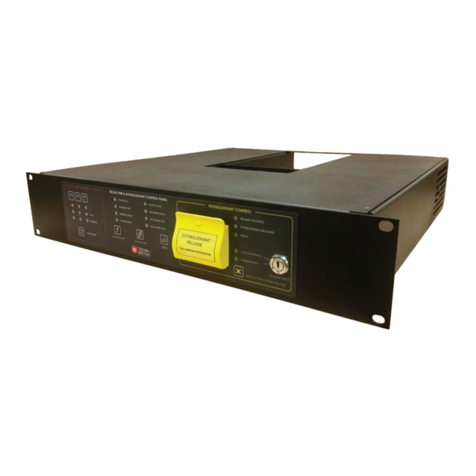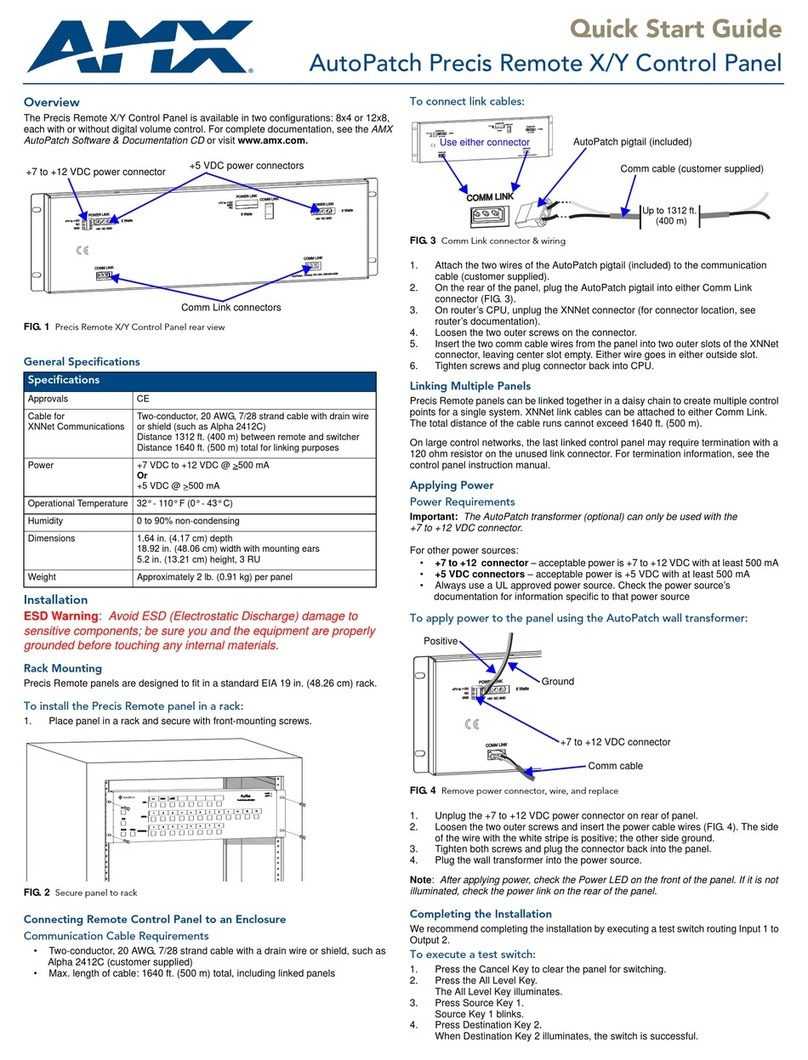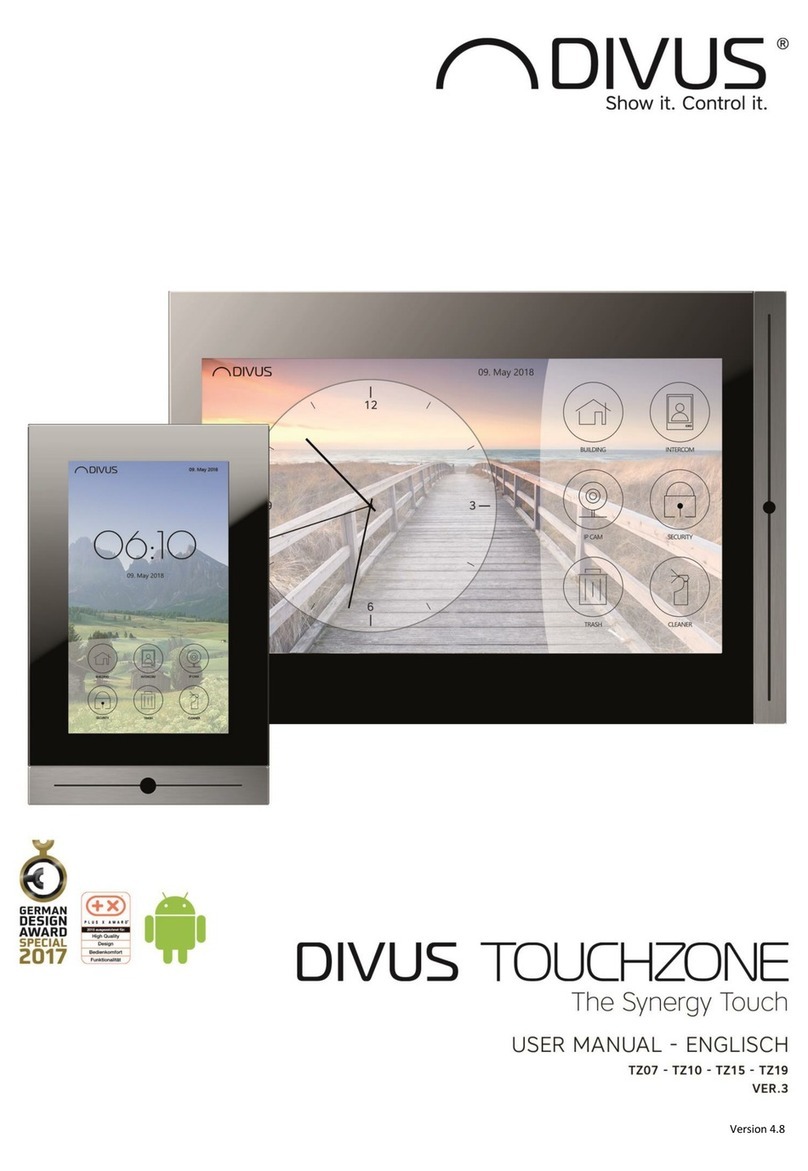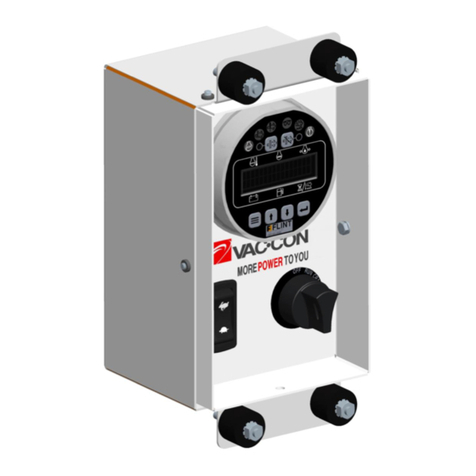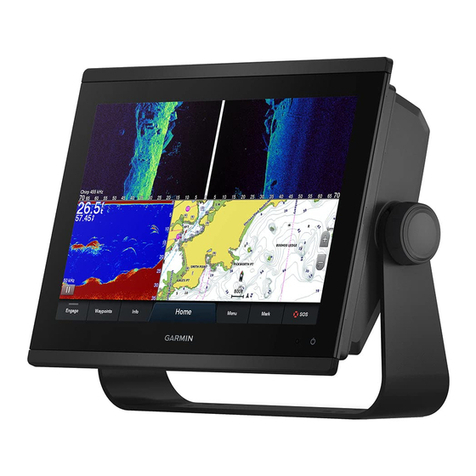Sonetonix CS-BP8-B User manual

User Manual
CS-BP8-B
Button panel, 8 programmable buttons, black faceplate

User Manual
CS-BP8-B
Button panel, 8 programmable buttons, black faceplate

CS-BP8-B User Manual
Aastro Electronics
Preface
Read this user manual carefully before using this product. Pictures shown in this
manual is for reference only, different model and specifications are subject to real
product.
This manual is only for operation instruction only, not for any maintenance usage. The
functions described in this version are updated till April 2015. Any changes of functions
and parameters since then will be informed separately. Please refer to the dealers for
the latest details.
All product function is valid till 2015-4-3.
Trademarks
Mentioned product model and logo are trademarks. Any other trademarks mentioned
in this manual are acknowledged as the properties of the trademark owner. No part of
this publication may be copied or reproduced without prior written consent.
FCC Statement
This equipment generates, uses and can radiate radio frequency energy and, if not
installed and used in accordance with the instructions, may cause harmful interference
to radio communications. It has been tested and found to comply with the limits for a
Class B digital device, pursuant to part 15 of the FCC Rules. These limits are designed
to provide reasonable protection against harmful interference in a commercial
installation.
Operation of this equipment in a residential area is likely to cause interference, in
which case the user at their own expense will be required to take whatever measures
may be necessary to correct the interference
Any changes or modifications not expressly approved by the manufacture would void
the user’s authority to operate the equipment.

CS-BP8-B User Manual
Aastro Electronics
SAFETY PRECAUTIONS
To insure the best from the product, please read all instructions carefully before using
the device. Save this manual for further reference.
Unpack the equipment carefully and save the original box and packing material for
possible future shipment
Follow basic safety precautions to reduce the risk of fire, electrical shock and injury
to persons.
Do not dismantle the housing or modify the module. It may result in electrical shock
or burn.
Using supplies or parts not meeting the products’ specifications may cause damage,
deterioration or malfunction.
Refer all servicing to qualified service personnel.
To prevent fire or shock hazard, do not expose the unit to rain, moisture or install this
product near water.
Do not put any heavy items on the extension cable in case of extrusion.
Do not remove the housing of the device as opening or removing housing may
expose you to dangerous voltage or other hazards.
Install the device in a place with fine ventilation to avoid damage caused by
overheat.
Keep the module away from liquids.
Spillage into the housing may result in fire, electrical shock, or equipment damage. If
an object or liquid falls or spills on to the housing, unplug the module immediately.
Do not twist or pull by force ends of the optical cable. It can cause malfunction.
Do not use liquid or aerosol cleaners to clean this unit. Always unplug the power to
the device before cleaning.
Unplug the power cord when left unused for a long period of time.
Information on disposal for scrapped devices: do not burn or mix with general
household waste, please treat them as normal electrical wastes.

CS-BP8-B User Manual
Aastro Electronics
Table of Contents
1. Introduction............................................................................................................... 1
1.1 Introduction to the Programmable Control Panel.................................................... 1
1.2 Features......................................................................................................... 1
1.3 Package List.................................................................................................... 1
1.4 Installation....................................................................................................... 2
2. Panel Descriptions......................................................................................................2
2.1 Front Panel......................................................................................................2
2.2 Side Panel.......................................................................................................3
2.3 Rear Panel...................................................................................................... 4
3. Connections.............................................................................................................. 5
3.1 System Diagram...............................................................................................5
3.2 Connection of Programming and Looping............................................................. 5
4. System Operations..................................................................................................... 7
4.1 USB Driver Installation...................................................................................... 7
4.2 Software Programming...................................................................................... 7
4.2.1 Main Menu............................................................................................8
Panel/Key setting.........................................................................................10
Action list................................................................................................... 12
Event setting...............................................................................................13
Event List................................................................................................... 20
5. Specification............................................................................................................22
6. Panel Drawing......................................................................................................... 22
7. Troubleshooting & Maintenance..................................................................................23
8. After-sales Service................................................................................................... 24

CS-BP8-B User Manual
Sonetonix 1
1. Introduction
1.1 Introduction to the Programmable Control Panel
The programmable control panel is a Wall Control Panel. Every button is
programmable and works either individually or together. The programmable control
panel is built in the programmable 3 RS232, 1 RS485,3 Infrared& 2 Relay, and 1 mini
USB for programming.
Please notice, RS232 (1) and IR2 share the same port, cannot be used at the same
time. Also, RS232 (2) and IR3 share the same port, cannot be used at the same time.
It can fully control our product, as well as third party devices such as projectors,
screens etc. It is an easy-to-use control device for presentation show rooms,
classrooms and boardrooms.
1.2 Features
Every button can be programmed to send the bi-direction RS232 and RS485
commands simultaneously to control third party devices.
Every button can be programmed to send the infrared code, control the relay, to let
them work simultaneously to control the third party devices.
Every button is built in the infrared code and RS232 code learning function, and
baud-rate setting.
ID looping function. 99pcs programmable control panels can be looped and
controlled together, by ID identifying.
Programmed by USB or RS232, working with the PC software (PS-WP).
Crystal and backlit buttons with easy user-friendly customizable changeable
labels.
The backlit brightness is controllable.
Dimension: 11.4cm long and 7cm wide.
1.3 Package List
1 x Programmable Control Panel
1 x Power adapter (DC 12V)
4 x Captive screw connector
3 x IR emit probe
1 x Button labels
1 x User Manual
Notes:Please confirm if the product and the accessories are all included, if not,
please contact with the dealers.

CS-BP8-B User Manual
Sonetonix 2
1.4 Installation
Follow the steps to install the device:
Firstly, dig a hole on the desk to the size marked on the aperture paper (shown in
Figure 1-1).
Secondly, put the device into the hole and adjust it to flush with the table (shown in
Figure 1-2).
Then, plug a set screw into the fixing mounting and screw the nuts tightly.
Figure 1- 1Aperture paper
Figure 1- 2 Installation Guide
2. Panel Descriptions
2.1 Front Panel
Crystal and luminescent, programmable buttons:
Every button can be programmable with the software PS-WP.
Connect the PC via USB or RS232.
And every label inside the button can be changeable. You can choose the label you
need and change it very easily like below:

CS-BP8-B User Manual
Sonetonix 3
(For the specific transparent paper table, please contact the local distributor or reseller
for it)
2.2 Side Panel
Note: When use this USB port to program the control panel’s buttons, the available
COM port number should not be more than 10.
Mini USB Connector:
1. Communicate with PC
which uses PS-WP to
programthe buttons.
2. Transmit the infrared
data when learning IR
(Optional).
Infrared sensor port:
receive and learn the IR
code, to build the IR
database.

CS-BP8-B User Manual
Sonetonix 4
2.3 Rear Panel
The programmable control panel has various ports in the rear panel, including Lopping
port, RS232 port, RS485 port, IR port, Relay port and Power port. Below is the
introduction:
1Power connector: 12VDC. Be sure that the “+” and “-” never be mixed or
wrong connection.
2Low-Voltage relay ports: set the relay on/off by software PS-WP.
3This port includes: RS232 (1)/IR2, IR1 and RS485.
a) RS232 (1)/IR2: share the same port, the detailed use depends on the setting of
PS-WP. When be used as RS232, it is unidirectional transmission, transmit
data but without receive.
b) IR1: for control other devices, it can be programmable by the PS-WP.
c) RS485:the RS485 can be programmed as different commands and control the
device with RS485 port. The command of RS485 is the same as RS232 (1).
4This port includes two parts:
One part is RS232 (2)/IR3, it can be used for control other devices or looping
output. RS232 (2) and IR3 share the same port, the detailed use depends on the
setting of PS-WP.
Other part is RS232 (3), it can be used for control other devices or looping output,
or connect with PC.
These two parts share the same grounding.
①
④
③
②

CS-BP8-B User Manual
Sonetonix 5
3. Connections
3.1 System Diagram
The programmable control panel can active different ports at one time. It means every
button can send the RS232 and RS485 commands, IR code and control the relay at
the same time. The demo system diagram as below:
3.2 Connection of Programming and Looping
The programmable control panel can be connected to the computer for programming,
to default the functions of every button. It can be connected by USB or RS232, working
with the PS-WP software. It is shown as below:

CS-BP8-B User Manual
Sonetonix 6
Programming Connection
Several pieces programmable control panels can be also looped to be a system, for
control more devices. It is looped by the inter RS232 setting. Please check the demo
picture as below:
Several programmable control panels Looping connecting
After connect the programmable control panels as above, and then we should set the
ID of each programmable control panel by PS-WP. The ID number is from 01 to 99,
and it also is the class of the programmable control panel in the loop,
differentprogrammable control panels should set to different ID. Afterconnections finish,
we can set the control modes by PS-WP. For detailed connecting, please check the
picture below:

CS-BP8-B User Manual
Sonetonix 7
Detailed looping connecting
Note: Up to 99 programmable control panels can be looped within one system.
However, to achieve normal interaction, loop less programmable control panels (10
tops) in the system.
4. System Operations
4.1 USB Driver Installation
There are USB driver file and PS-WP software in the disk. The PS-WP can run directly
without installation.
But when connect the programmable control panel with PC by USB, it may need to
install the USB driver. Use the driver file to install the driver of USB, we can use USB
to program the programmable control panel.
4.2 Software Programming
You can use this software PS-WP to easily set every button of the programmable
control panel.
After connect the programmable control panel with PC by USB or RS232, we can
open the PS-WP to program the buttons for controlling.
The main window of PS-WP has five parts: main menu, panel (button) setting, event
setting, action list and event list. In this manual we will take programmable control
panels-V for example, to show the uses of all functions.
The main window of PS-WP is as below:
Second class
Last class…

CS-BP8-B User Manual
Sonetonix 8
We will introduce all the configurations one by one.
4.2.1 Main Menu
The main menu includes file management, system model, connection type and help.
1) File management: Open/Save/Save as a configuration. After program, user can
save the configuration to a file, so that you can use the same configuration next
time.
2) System model: includes programmable control panels-H, programmable control
panels-V, WP19R etc, and the buttons interface view are different with different
models. The pictures below show the differences between programmable control
panels-V and programmable control panels-H.

CS-BP8-B User Manual
Sonetonix 9
NOTICE: When select the model, it will pop up “Output Port Selection” dialog, user
can select different RS and IR types, depend on the uses of the two shared ports. The
dialog is as the picture below:
The output port set in PS-WP and the port used in the programmable control panel is
corresponding. And there are four output types. They are showed as below form (“√”
means port is available):
Output port
ofthe
Panel
Output mode
of PS-WP
IR1
RS232(1)
IR2
RS232(2)
IR3
RS232(3)
RS485
RS232(1)(2)
√
√
√
√
√
RS232(2),IR2
√
√
√
√
RS232(1),IR3
√
√
√
√
√
IR2,3
√
√
√
√
3) Connection type: the instructions are in the picture below:

CS-BP8-B User Manual
Sonetonix 10
The functions of the programmable control panel’s buttons will be available only
after the programmed data is uploading successfully.
4) Help: Show the information of PS-WP.
Panel/Key setting
There are three different colors of keys in the panel set of PS-WP. Add a key action to
action list, then add events to this action, make this action will execute the events.
Here take programmable control panels-V for example, to introduce the uses of
different buttons:
1. White keys: keys 1-8, correspond to the buttons on the programmable control
panel. Click the key, it will pop up dialog as below:
1:Com, connect by serial port.
2:USB, connect by mini USB.
3:Disconnect, disconnect the
connection.
4:Upload: upload the programmed
data to the programmable
control panel. It will clear all the
old data in the programmable
control panel.
5:Clear, clear the data in the
programmable control panel.

CS-BP8-B User Manual
Sonetonix 11
When select the type “Toggle”, the setting interface is as below:
The toggle class is the action loop class, depends on the numbers of looped
actions. When the class is 2, there are two actions in the toggle. And so on.
2. Blue Keys: Keys 9-32, all are virtual keys, used in the loop function. When use the
loop function, the ID must be set, the ID can be 1 to 99. Press “add” will add the
button to action list.
Key Action Type:
1. Press: Execute events
when press button.
2. Release: Execute events
when release button.
3. Page: Built-in most 4
actions, actions need to
be switched by other
buttons, press to execute.
4. Toggle: Built-in most 4
actions, actions will loop
run when press. Actions
can also be switched by
other buttons, press to
execute.

CS-BP8-B User Manual
Sonetonix 12
3. Yellow Keys: Keys 33-36, all are virtual keys. Key 33 and 34 are for I/O control,
which is not supported with the programmable control panel. Key 36 is a start
action, if add events to this action, when the programmable control panel is power
on, it will execute the events in this action. Key 35 is delay button, there are three
time slots can be set. See in the picture below:
The time is counted from the programmable control panel start. When come to time1,
the programmable control panel will execute the events in time1. Then recount from
time2, and then time3.
Example: Set time1 to 5 minutes, and time2 to 3 minutes, add event1 to time1 and
event2 to time2. When the unit starts, it will execute event1 after 5 minutes, and then
execute event2 after 8 minutes.
Action list
Action list shows all the set actions. Anavailable action must be added to the list. The
action list is as the picture below:
Delete a
selected action.
Refresh, delete all the
actions that with no event.
Delete all actions.

CS-BP8-B User Manual
Sonetonix 13
Event setting
Event setting includes RS232, IR, I/O, Relay, Delay, Compare, LED, Page, Loop and
Toggle setting. Before set events, an action must be added first. The following
introduction will show you the setting of each event:
RS232 Setting
This item is used for setting the parameters of the programmable control panel’s serial
ports. Click “RS232”, it will show as below:
1) The data of RS232 can be directly entered or selected from library. Click “Change
Lib” to select a library file and open it. Click “Edit Lib” to create or edit a library file
as below:
Notice: When editing finish, remember to save the editing, and then press“OK”.
2) There are two send types: send once and send more times. When select “more
Send
Type
Send
Port
Enter the serial command for device control.
Create/delete the function
name of the command
Create/open a library

CS-BP8-B User Manual
Sonetonix 14
times”, the send times and the delay between times can be set. See in picture
below:
3) The send port must be selected as the same as model setting, otherwise the event
cannot be added.
4) User can set the event name. It is optional function, not necessary.
IR Setting
This item is used for setting the parameters of the programmable control panel’s IR
ports. Click “IR”, it will show as below:
1) The data of IR need to be selected from library. Click “Change Lib” to select a
library file and open it. Click “Edit Lib” to create or edit a library file as below:
Create/delete/rename the
function name of the IR data
Create/open a library

CS-BP8-B User Manual
Sonetonix 15
Notice: When editing finish, remember to save the editing, and thenpress “OK”.
2) There are two send types: send once and send more times. When select “more
times”, the send times and the delay between times can be set. See in picture
below:
3) The send port must be selected as the same as model setting, otherwise the
event cannot be added.
4) The IR can set the carrier on/off, to turn on/turn off the IR sending.
I/O Setting
There is no I/O port in the programmable control panel, so the setting is not
introduced in this manual.
Relay Setting
Table of contents

